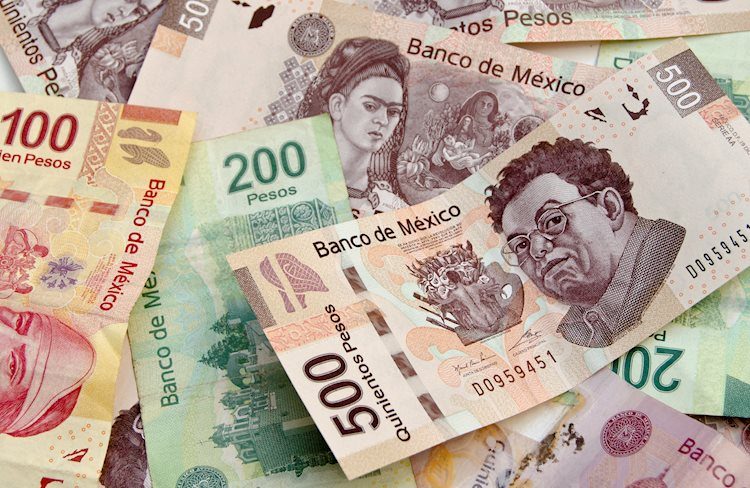The Mexican Peso has seen gains for the third consecutive day, trading below 18.10 against the US Dollar. Weaker US economic data, including disappointing ADP Employment Change and rising unemployment claims, has put pressure on the Greenback. Bank of Mexico Deputy Governor Jonathan Heath echoed the Federal Reserve’s cautious stance on rate cuts, providing further support to the Peso.
The USD/MXN trades at 18.08, down 0.36% amid speculation that the Federal Reserve could begin its easing cycle this year. This comes as some Fed officials have mentioned that the risks of the dual mandate are more balanced. The USD weakened further as US data on Wednesday showed signs of economic slowing, with ADP Employment Change missing expectations and unemployment claims rising.
Additionally, the ISM Services PMI in the US plunged into contractionary territory, leading to a decrease in US Treasury yields and further undermining the Greenback. The odds of a rate cut by the Federal Reserve in September have increased to 66%, up from 63% the day before.
Mexico’s economic docket is light, but the Peso received a boost from Banxico Deputy Governor Jonathan Heath who supports a more cautious approach to rate cuts. Economists expect Mexico’s GDP to end at 2%, with projections of a rate cut by Banxico from 11.00% to 10.25%. Fed Chair Powell has highlighted progress on inflation in the US economy.
Technical analysis shows the USD/MXN pair extending losses with support at 18.10 and potential further declines towards 18.00. Breaking below this level could lead to support at 17.56. Alternatively, a move above 18.50 could lead to a rally towards the June 28 high of 18.59.
The Mexican Peso is influenced by various factors such as the performance of the Mexican economy, central bank policy, foreign investment, remittances, and geopolitical trends. The main objective of Banxico is to maintain low and stable inflation levels through appropriate interest rates. Macroeconomic data releases and market sentiment also impact the valuation of the Mexican Peso.
As an emerging-market currency, the Mexican Peso tends to perform well during risk-on periods when market risks are perceived to be low. However, during times of market turbulence or economic uncertainty, the Peso tends to weaken as investors seek safe havens. Overall, the Mexican Peso is a key currency in Latin America, heavily influenced by both domestic and global economic factors.











